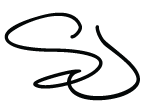OVERVIEW
Pharmaceutical execs and decision-makers want to attend medical conferences such as BioFuture and receive clear, concise, and holistic information from knowledgeable brand ambassadors who help them connect the dots of how revolutionary therapies can positively impact their bottom line and patient’s health.
THE GOAL
How might we use Spacee Technology to do the following:
• excite attendees while they are in the booth and after their visit
• engage attendees as they are walking by the booth and interacting with brand ambassadors
• educate attendees on the Cytonus technology and its innovative benefits
How might we use Spacee Technology to do the following:
• excite attendees while they are in the booth and after their visit
• engage attendees as they are walking by the booth and interacting with brand ambassadors
• educate attendees on the Cytonus technology and its innovative benefits
THE VISION
To develop an engaging interactive booth design to share the brand Cytonus with tradeshow attendees.
To develop an engaging interactive booth design to share the brand Cytonus with tradeshow attendees.
Team
Setria James
April Sanichanh
Ethan Epstein
Susan Jacobson
Setria James
April Sanichanh
Ethan Epstein
Susan Jacobson
My Role
UX/UI Designer
UX Researcher
UX/UI Designer
UX Researcher
Tools
Miro
Adobe XD
Adobe Illustrator
Adobe Photoshop
Miro
Adobe XD
Adobe Illustrator
Adobe Photoshop
Duration
Overall: 6+ weeks
Research: 6+ weeks
Design: 6+ weeks
Testing & Iterations: 6+ weeks
Overall: 6+ weeks
Research: 6+ weeks
Design: 6+ weeks
Testing & Iterations: 6+ weeks
EMPATHIZE
RESEARCH
Before starting the project, we outlined the steps including a project brief and research plan. Our study included research of Spacee Technology (the client), Cytonus (the brand), Medical Tradeshows (specifically BioFuture), and their attendees. It was our goal to understand every element of the project before defining, designing and validating our solution.
Before starting the project, we outlined the steps including a project brief and research plan. Our study included research of Spacee Technology (the client), Cytonus (the brand), Medical Tradeshows (specifically BioFuture), and their attendees. It was our goal to understand every element of the project before defining, designing and validating our solution.
Cytonus Technology
Cytonus revolutionized the cancer treatment process through the development of GPS-like system which solely targets cancerous cells and delivers the required therapeutics to eradicate the disease.
Cytonus revolutionized the cancer treatment process through the development of GPS-like system which solely targets cancerous cells and delivers the required therapeutics to eradicate the disease.
Spacee Technology
Spacee developed innovative technology called HoverTouch, which uses computer vision and AI to create touchless interactive experiences. We discovered with all of the technologies benefits, it would be a perfect vehicle to transport the data of Cytonus to tradeshow attendees.
Spacee developed innovative technology called HoverTouch, which uses computer vision and AI to create touchless interactive experiences. We discovered with all of the technologies benefits, it would be a perfect vehicle to transport the data of Cytonus to tradeshow attendees.
Medical Tradeshow Attendees
Medical trade shows such as BioFuture attendees include executives and decision-makers from the entire health ecosystem – biopharma, digital medicine, AI, machine learning, genetics, big data, patient advocates, professional advisors, investors, and big thinkers.
Medical trade shows such as BioFuture attendees include executives and decision-makers from the entire health ecosystem – biopharma, digital medicine, AI, machine learning, genetics, big data, patient advocates, professional advisors, investors, and big thinkers.
PAINPOINTS
During the research process, we spoke to our decision-makers regarding their pain points. The main pain point they focused on was prior knowledge and how frustrating the conversations around therapies can be. We narrowed down their issues into the following list:
During the research process, we spoke to our decision-makers regarding their pain points. The main pain point they focused on was prior knowledge and how frustrating the conversations around therapies can be. We narrowed down their issues into the following list:
1. Since our attendee often knows more about the therapy than the booth staff, there tends to be a lack of clarity when it comes to realistic competitive advantage. They understand how these types of therapies work, but need to understand how Cytonus truly stands apart compared to what they already utilize.
2. When attendees have questions, they often go to booth staff, who are generally marketing and salespeople. Our interviewees noted that “Salespeople have a track and usually can only answer questions specific to that track. Any other specialized information requires PhD or PharmD explanation. Many times, those individuals aren’t present, so we often have to connect after the event” This back and forth after the event often lengthens the time between learning and applying the therapy to scale.
3. It’s difficult for attendees to connect all of the dots to how these revolutionary therapies can actually be worth spending a large amount of money on.
KEY FINDINGS
The following themes stood out to us during the interview process.
The following themes stood out to us during the interview process.
1. Data: Many of these decision-makers stay current on therapies by reading detailed medical journals and case studies. they often enter the booth knowing more about the overall therapy than the booth staff do, which lends to additional information received being less than satisfactory, as dots to why Cytonus is best often get lost in the sauce.
2. Presentation: Many “presentations” were deemed too high level, and to “round it out,” the staff simply bombarded you with data points that supported their vision.
3. Cost: Cost played a role in most decisions being made; often the therapy or product that set this group out was much too expensive for the high-level presentation they just sat through. They wanted to understand why the cost was so high, from a practical standpoint, and tuned out once they heard about the financial involvement.
EMPATHY MAP & CLUSER BOARDER
Leading with research, we compiled empathy maps and discovered six common themes of education, expenses, utilization, connection, innovation, and entertainment. This step in the process allowed us to gain deeper insight into the conference attendees.
Leading with research, we compiled empathy maps and discovered six common themes of education, expenses, utilization, connection, innovation, and entertainment. This step in the process allowed us to gain deeper insight into the conference attendees.
Empathy Map
Cluster Board
PERSONA
Compiling the data from our interviews, we wanted to craft a persona that fit all types of decision-makers.
Compiling the data from our interviews, we wanted to craft a persona that fit all types of decision-makers.
Meet Randall. Randall is a VP of a Pharmacy for one of the largest Hospital Groups in the country. He has been tasked with attending BioFuture’s annual conference to collect data for promising medical strategies in search of relevant therapeutics for their patients. Randall and the team will determine the appropriate usage and administration of the therapeutics in treatment.
From the moment our attendee enters the expo hall, they are looking for solutions that can save lives in their hospital system. Decision makers go into these trade shows looking for a product to wow them, provided by a company that will truly convince them that they have the power to change the world. Since this desire is not often met, they leave feeling underwhelmed and oversold.
Meet Randall
DEFINE
JOURNEY MAP - HOW MIGHT WE STATEMENTS
We examined the booth build out process from the perspective of the VP of Marketing and Sales. The process included six steps: kickoff meeting, technical discovery, development/creative, booth build out, booth shipment, and show maintenance/support. Based on our journey map, we created 26 HMW statements and narrowed them down to three primary opportunities for innovation.
We examined the booth build out process from the perspective of the VP of Marketing and Sales. The process included six steps: kickoff meeting, technical discovery, development/creative, booth build out, booth shipment, and show maintenance/support. Based on our journey map, we created 26 HMW statements and narrowed them down to three primary opportunities for innovation.
IDEATE
With the goal of exciting, engaging, and educating attendees, we immediately considered the idea of gamifying the booth experience as gamification has been proven to increase knowledge retention. Gamifying the Cytonus vision using Spacee technology would help attendees make the necessary connections and develop a deeper understanding of the product and the benefit of implementation.
Gamifying also allowed us to showcase the comparison of the targeted treatment made possible by the Cargocyte versus the blanket destruction of traditional chemotherapy. During this process, we partnered with the stakeholders through five iterations/options before landing on our final prototype.
PROTOTYPE
For our final option, we decided on a combination game based on the stakeholder feedback, which included 50% driving/journey and 50% shooting.
Upon the start of the game, attendees are briefed on Cytonus’s vision and how it relates to their role in their upcoming mission. They are then given gamified context to the incredible damage of traditional chemo compared to the revolutionary benefits of the Cargocyte in the accurate targeting of cancer cells.
Attendee avatars are then shrunken down on a screen and sent on a mission through the human body. They are then tasked with identifying and target zapping cancer cells as the medication boat travels down the bloodstream.
As cancer cells are zapped, attendees are awarded points, while information about the method of delivery and therapeutic benefits are showcased in popup fashion.
At the end of the game, attendees leave with information that showcases relatability and relevance.
Attendees can then walk around the booth and interact with other HoverTouch screens that reinforce their new knowledge, showcasing therapies and other interactions, and can speak to booth staff about scheduling further meetings or setting up trials. This option is also available to those who aren’t feeling like playing the main game.
VALIDATE
Meeting with the stakeholders were were able to collect feedback and ask followup questions regarding the pitch presentation.
Stakeholder Quotes

